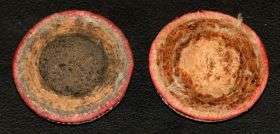Cricket ball quality hit for six

(PhysOrg.com) -- A study by a University of Adelaide sports engineer shows that not all cricket balls are consistently manufactured, causing quality issues and potentially having major implications for cricket matches.
The research, conducted by the coordinator of the Sports Engineering degree program at the University of Adelaide, Associate Professor Franz Konstantin Fuss, studied five models of cricket balls manufactured in Australia, India and Pakistan.
The study looked at the methods of construction, stiffness, viscous and elastic properties, and included changes to the balls' performance under compression and stress relaxation tests.
The results of his study will be discussed today (Thursday 27 November) at a free public event, Pride, Prejudice, Power & Race in Cricket, being held at the University of South Australia and University of Adelaide this week.
Dr Fuss found that the model manufactured in Australia - the Kookaburra Special Test - was the only cricket ball manufactured consistently. The other four models were found to have inconsistent "stiffness", which can play an important part in how a ball reacts when struck by the bat.
"In contrast to other sport balls, most cricket balls are still hand-made, which may affect the consistency of manufacturing and thus the properties of a ball," Dr Fuss says.
"Of the five we looked at, the Kookaburra was the only one manufactured consistently. The other four models revealed two different, yet externally indistinguishable constructions, which resulted in two clusters of different stiffness: soft and hard. In some cases, balls tested from the same model behaved like completely different balls.
"The consistency of cricket balls may have severe implications during a match, as softer balls are more 'forgiving' because they have a smaller impact force, a longer contact with the bat, larger deflections as well as larger contact areas during impact, which, in sum, allows a batsman to place the ball more precisely.
"If the batsman doesn't hit the ball perfectly, a softer ball can still go in the direction aimed at by maintaining its velocity; a hard ball might slide off the bat," he says.
Issues that may impact on the inconsistent performance of cricket balls include: different core sizes, different core materials (cork, rubber, or a mixture of the two), the tension of woollen twine inside the ball, and lacquer surface finish.
Dr Fuss says he believes a standard manufacturing process should be enforced to reduce the "lottery effect" of unseen inconsistencies. "A more stringent quality control and testing standard is required for cricket balls in order to avoid unequal chances for both teams," he says.
The results of this study were published in the international journal Sports Technology earlier this year. For a full copy of the paper, please go to www3.interscience.wiley.com/cg … t/120195073/PDFSTART
Provided by University of Adelaide




















